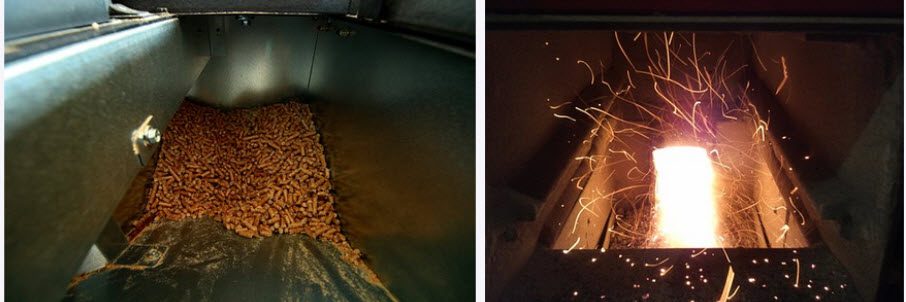Charcoal is a lightweight black carbon residue formed when carbon-rich materials are heated to a very high temperature in a low-oxygen environment, which removes water and volatile constituents from the material.
Wood coal is charcoal produced from wood, and the intentional production of wood coal goes back to Ancient times. In parts of Europe, charcoal production was so immense that it led to deforestation. By the Industrial Revolution, the scarcity of suitable wood was a driving force behind the switch from wood coal to fossil fuels such as coal and brown coal (lignite) in England.
In the Nordic countries, charcoal production has traditionally been considered a (desirable) by-product of pinewood tar production.

Wood coal production
Wood coal is produced by burning wood under low-oxygen conditions. Around the world, many different methods have been developed to achieve this.
One example of a traditional method is the clamp method. In this context, the clamp is a pile of wooden logs leaning in a conical circle against a central chimney. The chimney is made from four wooden stakes held together with some rope. To reduce the amount of available oxygen, the logs are covered in soil, straw, turf or similar. To light the clamp, burning fuel is entered into the bottom of the chimney. Because of the low-oxygen conditions, the logs will burn very slowly and turn into charcoal. Expect the process to take up to a week. The clamp must be inspected frequently, because the coating may need mending.
Under average conditions, this traditional method will only yield around 50%-60% charcoal by volume (roughly 25% by weight). As early as the 17th century however, various improvements had been discovered that allowed for skilled and diligent colliers (charcoal producers) to yield up to 90% charcoal by volume.
Temperatures
Wood begins to turn brown around 220 degrees C, and if the temperature reaches 280 degrees C the wood will develop a deep brown-black shade. At 310 degrees C, the wood turns into a rather frail mass that can be turned into a powder without much effort.
Generally speaking, charcoal made at 300 degrees C will be brown and soft, and it will be fairly easy to set it alight later, since it will readily inflame at 380 degrees C. Charcoal made at a higher temperature than this becomes harder and more brittle, and it will not readily inflame before circa 700 degrees C.
What is lump charcoal?
Traditional charcoal made directly from hardwood is called lump coal in contexts where it needs to be distinguished from other types of charcoal.
What is extruded charcoal?
Extrude: to force, press, or push out
Extruded charcoal is produced when processed wood is pressed into logs without the use of a binder. Either raw ground wood or carbonized wood can be used, but if raw ground wood is used the log must be carbonized afterwards.
No binder is required for extruded charcoal logs, since the heat and pressure of the extrusion process is enough to hold the charcoal together.
What is sawdust briquette charcoal?
Sawdust briquette charcoal is produced by compressing sawdust into briquettes. The standard variant has a hole through the centre. It is a popular choice for cooking, since it produces high heat but hardly any odour when burning.
A subset of the sawdust briquette family is the pillow shaped briquettes, which includes a binder (usually starch). Because of the binder, the briquette can stay together even if it is not pure sawdust. Some pillow shaped briquettes contain brown coal, mineral carbon, limestone (ash-whitening agent), and/or sodium nitrate (ignition aid).
The Japanese Ogalite is a special type of sawdust briquette charcoal developed in Japan the 1920s.

